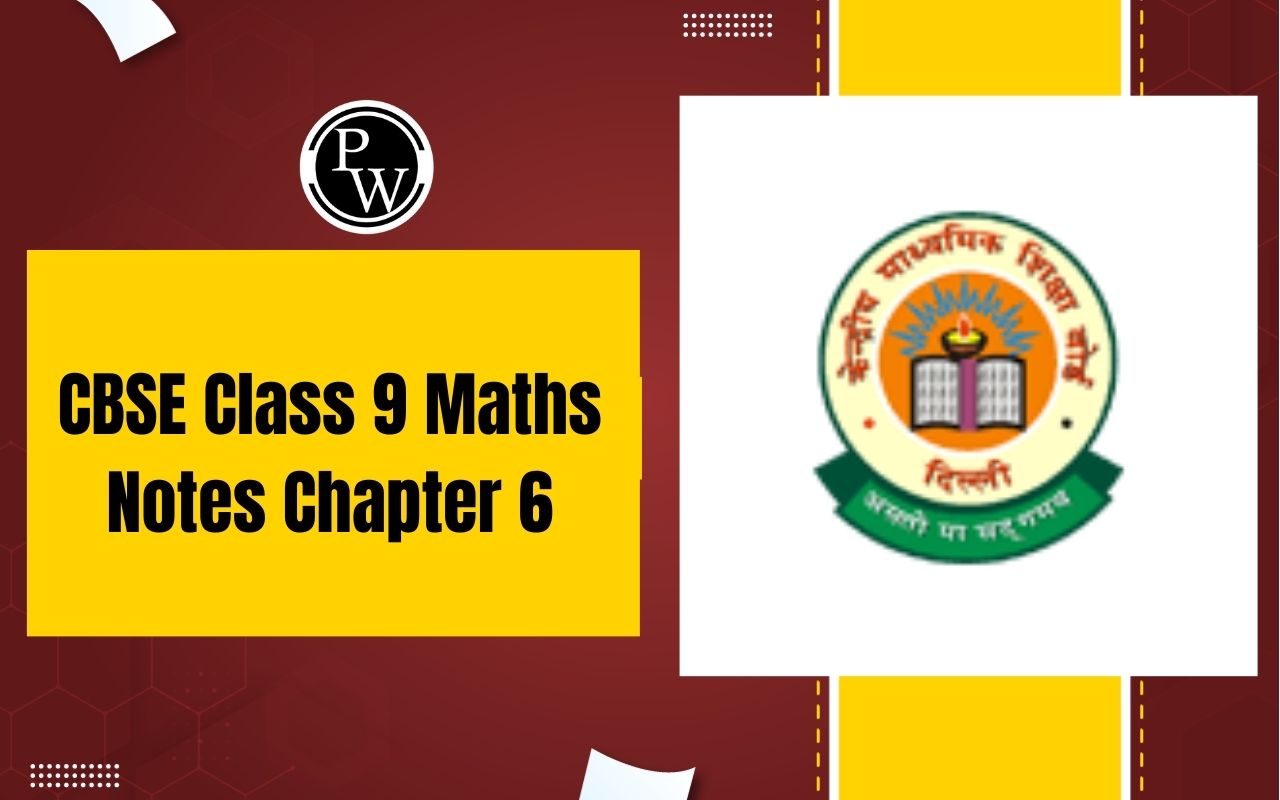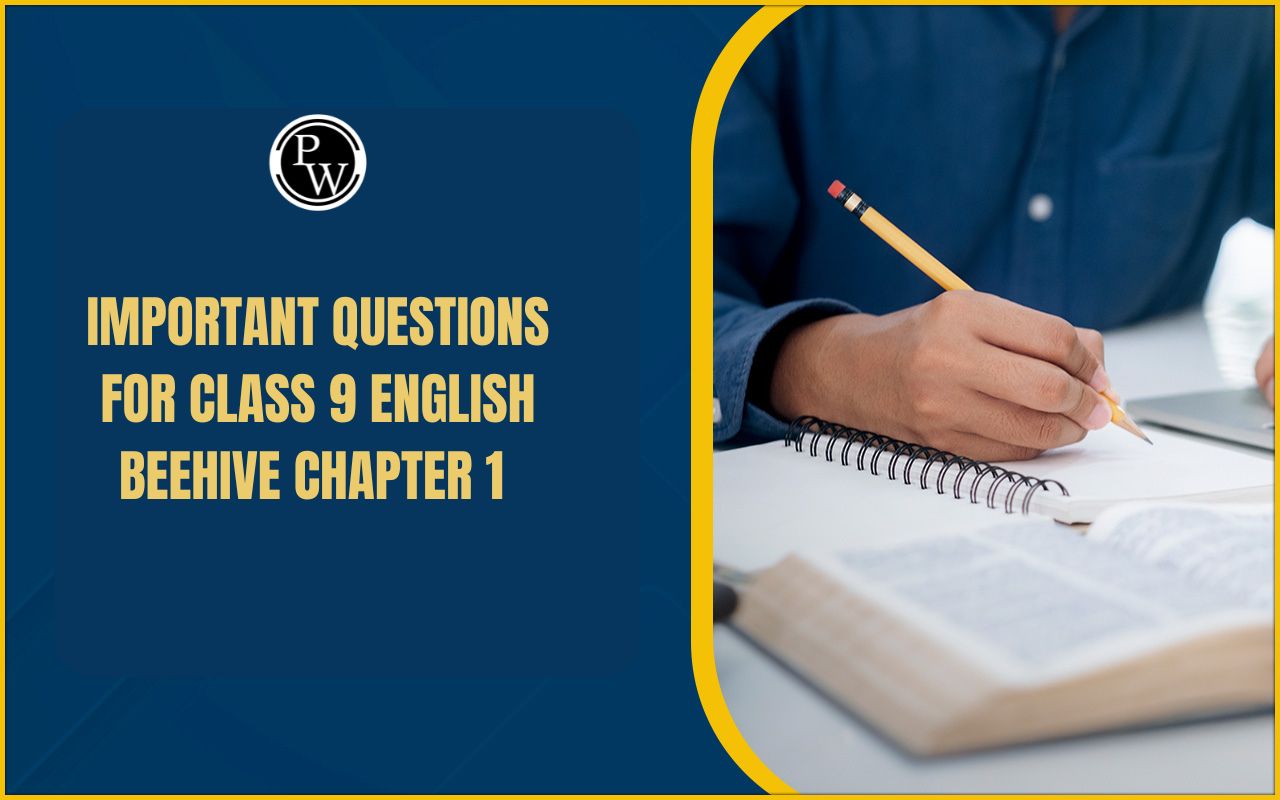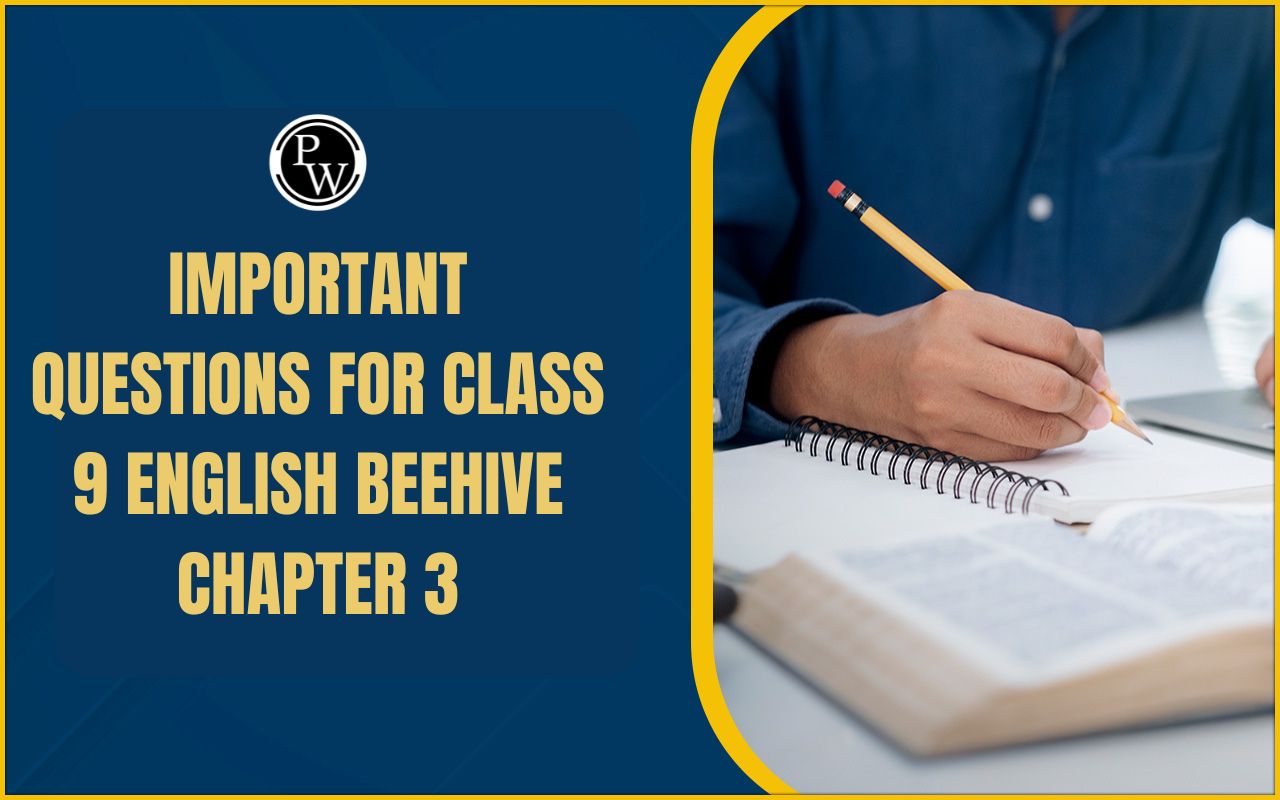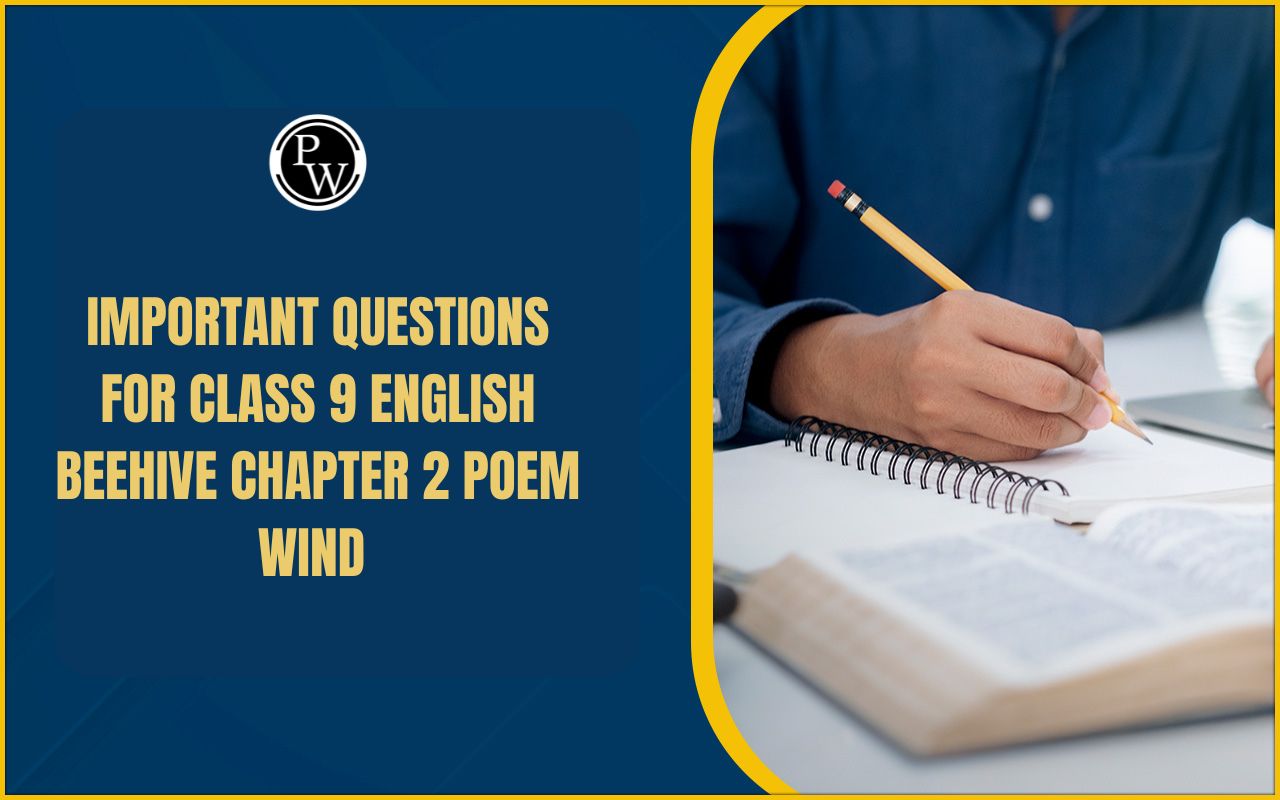

CBSE Class 9 Maths Notes Chapter 6: In Chapter 6 of CBSE Class 9 Maths, we learn about "Lines and Angles." This chapter helps us understand the basics of lines and angles. We explore different types of angles like complementary, supplementary, adjacent, and vertically opposite angles.
We also learn about different kinds of lines such as parallel, perpendicular, and intersecting lines, along with their properties. Through examples and exercises, we practice solving problems related to lines and angles. This helps us become better at understanding and using geometric concepts in mathematics.CBSE Class 9 Maths Notes Chapter 6 Lines and Angles Overview
These notes, created by the Physics Wallah team of subject experts, provide a comprehensive overview of CBSE Class 9 Maths Chapter 6, "Lines and Angles." These notes are written in simple language, they aim to make the concepts accessible and easy to understand for students. With a focus on clarity and effectiveness, these notes cover the fundamental principles of lines and angles, including types of angles, properties of lines, and their relationships. By studying these notes, students can build a strong foundation in geometry and develop the skills needed to tackle more advanced mathematical problems.CBSE Class 9 Maths Notes Chapter 6 PDF
The PDF linked below has easy-to-understand notes for CBSE Class 9 Maths Chapter 6, “Lines and Angles.” By studying these notes, students can grasp the core principles of Lines and Angles and how they are applied in solving mathematical problems.CBSE Class 9 Maths Notes Chapter 6 PDF
CBSE Class 9 Maths Notes Chapter 6 Lines and Angles
Point
- A point is a precise location in space, often represented by a dot.
- It has no length, width, or thickness but defines a specific position.
- Points are denoted by capital letters like A, B, C, O, etc.
Line Segment
- A line segment, represented as AB¯¯¯¯¯¯¯¯, is a straight path connecting two points, A and B.
- It has a defined length and two endpoints, but no width or thickness.
Ray
- A ray is a portion of a line that starts at a particular point (called the endpoint) and extends infinitely in one direction.
- It is represented by a line segment with an arrowhead at one end.
Line
- A line is formed when a line segment is extended infinitely in both directions.
- It has no endpoints and continues indefinitely in both directions.
Collinear Points
- Collinear points are points that lie on the same straight line.
- For example, if points A, B, and C are on the same line, they are said to be collinear.
- In a plane, any two distinct points determine a unique line, and three or more points can be collinear if they all lie on the same line.
Non-collinear Points
- Non-collinear points are points that do not lie on the same straight line.
- In other words, if you cannot draw a single straight line passing through all the points, they are non-collinear.
- For example, points A, B, C, D, and E are non-collinear.
Intersecting Lines
- Intersecting lines are two lines that meet or cross each other at a common point.
- This common point is called the point of intersection.
- Each line has an infinite number of points, but only one of those points is shared by both lines.
Concurrent Lines
- Concurrent lines are lines that intersect or meet at the same point.
- This point of intersection is common to all the lines.
- In a plane, if two or more lines share a common point of intersection, they are concurrent.
Plane
- A plane is a flat surface that extends infinitely in all directions.
- It is defined by any three non-collinear points or a line and a point not on the line.
- Examples of planes include the surface of a smooth wall, a piece of paper, or a tabletop.
- Any two points within a plane can be connected by a straight line, and any line segment lying entirely in the plane can be extended indefinitely to form a line.
Angles
Angles are geometric figures formed by two rays or two line segments that share a common endpoint, known as the vertex of the angle. Here's a detailed explanation:Vertex: The common endpoint of the two rays or line segments forming the angle.
Arms: The two rays or line segments that form the angle.
Types of Angles:
- Acute Angle: An angle whose measure is greater than 0° and less than 90°.
- Right Angle: An angle whose measure is exactly 90°.
- Obtuse Angle: An angle whose measure is greater than 90° and less than 180°.
- Straight Angle: An angle whose measure is exactly 180°.
- Reflex Angle: An angle whose measure is greater than 180° and less than 360°.
- Full Angle: An angle whose measure is exactly 360°.
Adjacent Angles: Two angles that share a common arm and a common vertex, but do not overlap.
- Complementary Angles: Two angles whose measures add up to 90°.
- Supplementary Angles: Two angles whose measures add up to 180°.
- Vertical Angles: Two angles formed by intersecting lines, where each angle's arms are opposite rays. They are congruent to each other.
Bisector of an Angle
The bisector of an angle is a line, ray, or line segment that divides the angle into two equal parts. BOˆC = COˆA and, BOˆC + COˆA=AOˆB and. AOˆB=2BOˆC=2COˆAParallel Lines
CBSE Class 9 Maths Notes Chapter 6 FAQs
What are parallel lines?
Parallel lines are two or more lines that are always the same distance apart and never intersect, no matter how far they are extended.
How are alternate angles defined?
Alternate angles are a pair of angles formed on opposite sides of a transversal and on different lines. They are equal when the lines are parallel.
What are corresponding angles?
Corresponding angles are a pair of angles formed on the same side of the transversal and in corresponding positions when two lines are intersected by a transversal.
Explain the concept of interior and exterior angles of a triangle.
Interior angles of a triangle are the angles formed inside the triangle by its three sides, while exterior angles are formed outside the triangle when one side of the triangle is extended.
What is the Angle Sum Property of a triangle?
The Angle Sum Property states that the sum of the interior angles of a triangle is always 180 degrees.
🔥 Trending Blogs
Talk to a counsellorHave doubts? Our support team will be happy to assist you!

Check out these Related Articles
Free Learning Resources
PW Books
Notes (Class 10-12)
PW Study Materials
Notes (Class 6-9)
Ncert Solutions
Govt Exams
Class 6th to 12th Online Courses
Govt Job Exams Courses
UPSC Coaching
Defence Exam Coaching
Gate Exam Coaching
Other Exams
Know about Physics Wallah
Physics Wallah is an Indian edtech platform that provides accessible & comprehensive learning experiences to students from Class 6th to postgraduate level. We also provide extensive NCERT solutions, sample paper, NEET, JEE Mains, BITSAT previous year papers & more such resources to students. Physics Wallah also caters to over 3.5 million registered students and over 78 lakh+ Youtube subscribers with 4.8 rating on its app.
We Stand Out because
We provide students with intensive courses with India’s qualified & experienced faculties & mentors. PW strives to make the learning experience comprehensive and accessible for students of all sections of society. We believe in empowering every single student who couldn't dream of a good career in engineering and medical field earlier.
Our Key Focus Areas
Physics Wallah's main focus is to make the learning experience as economical as possible for all students. With our affordable courses like Lakshya, Udaan and Arjuna and many others, we have been able to provide a platform for lakhs of aspirants. From providing Chemistry, Maths, Physics formula to giving e-books of eminent authors like RD Sharma, RS Aggarwal and Lakhmir Singh, PW focuses on every single student's need for preparation.
What Makes Us Different
Physics Wallah strives to develop a comprehensive pedagogical structure for students, where they get a state-of-the-art learning experience with study material and resources. Apart from catering students preparing for JEE Mains and NEET, PW also provides study material for each state board like Uttar Pradesh, Bihar, and others
Copyright © 2025 Physicswallah Limited All rights reserved.











